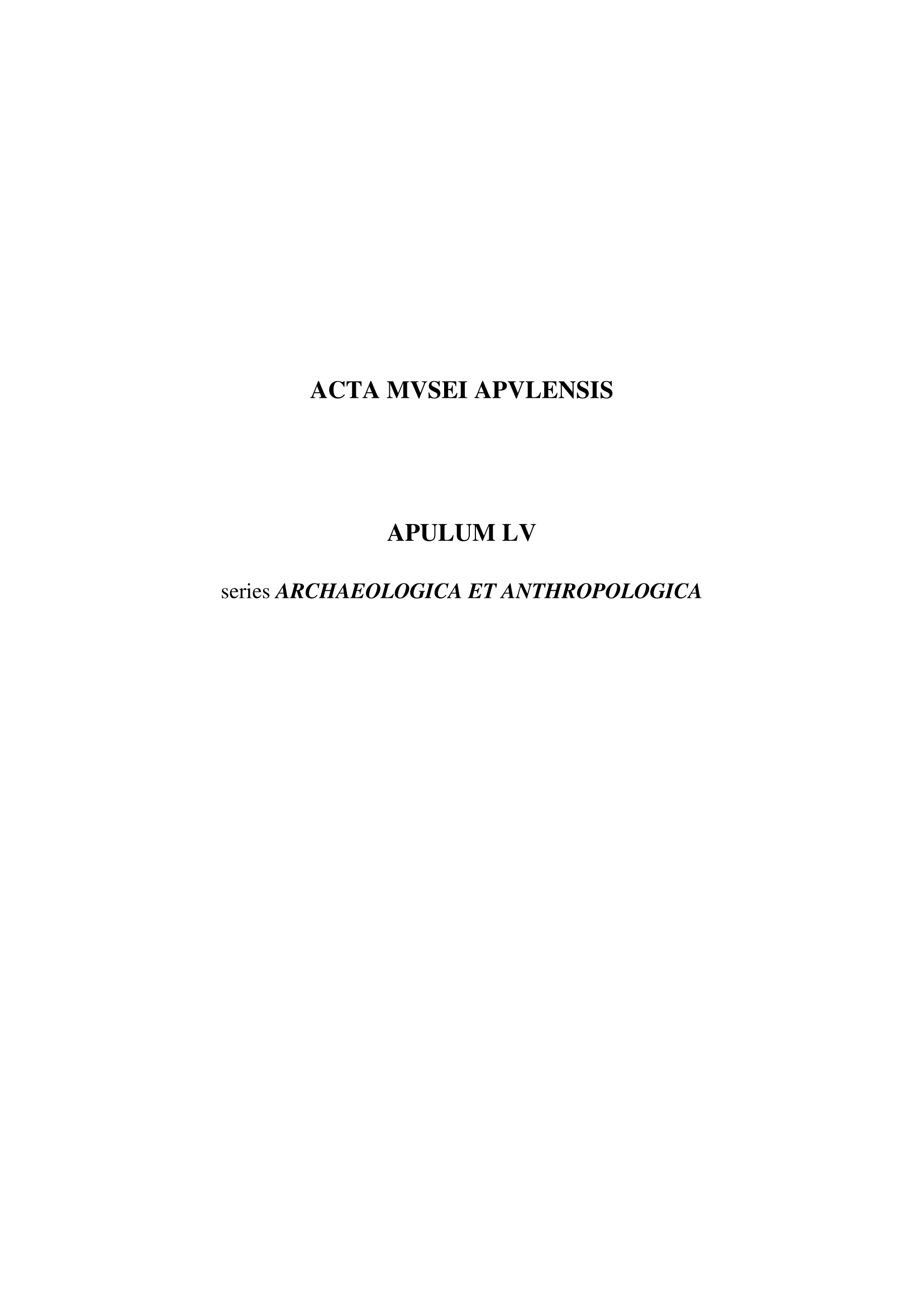TIPOLOGIA INVENTARULUI DIN CIMITIRUL DE LA ALBA IULIA - IZVORUL ÎMPĂRATULUI (SEC. X-XI)
THE CATEGORIZATION OF THE FUNERAL ARTEFACTS FROM ALBA IULIA - IZVORUL ÎMPARATULUI CEMETERY SITE
Author(s): Aurel Dragotă, Valentin Deleanu, Gabriel Tiberiu Rustoiu, Anca-Daniela MatişSubject(s): History, Archaeology
Published by: Muzeul National al Unirii Alba Iulia
Keywords: funeral inventory; weaponry; harness; adornment; clothing; 10th -11th centuries; Alba Iulia; Gylas;
Summary/Abstract: The focus of this paper relies on the wide range of funeral inventory found within the Emperor’s Spring necropolis (10th -11th century) in Alba Iulia. The funeral inventory recovered from the burial site is composed of neck adornments (beads, necklaces, pendants, roman perforated coins), arm adornments (simple or roped bracelets), rings, everyday tools and objects, clothing, religious and cult pieces, weaponry, harnesses and ceramics (fig. 1-6). The rings take on various shapes: lamellar and semicircular, some with two dent and others with plate or chaton (36 G type). The one piece made by means of grain technique or filigree work and the plate decorated ring are both elements emphasizing the Slavic or Byzantine influence. The bracelets can also be grouped into several shaped: simple (4 G shape) or with a closing mechanism, roped by means of two-three wires with a looped shaped closing mechanism or with both ends shaped as loops. The necklaces show a simple shape. These are made out of an iron or bronze wire, equipped with a closing mechanism consisting of two roped hooks. The closing works by means of loop and hook. Among the pieces worn around the neck, other shapes are to be identified: beads, three reliquary crosses, a chest small sized cross, wire pendants, bone or silver made shapes, pieces made by means of grain technique, Roman holed coins and Cypraea Moneta. The group of household objects consist of knives, a sickle, two pincers, lighters and firestones. A small jar shaped ceramic container was laid down near various anatomical parts within the children and adult graves. The weaponry and harness group contains arrow heads, metallic quiver leftovers, battle axe, a spear, a pair of horse riding ladders and a snaffle bit. There are analogies for the discovered objects, belonging to the same chronological period in archaeological sites from Bulgaria, Croatia, Slovakia, Hungary, Austria, Dalmatia, Macedonia, Albania and Serbia. The 10th century horizon is characterized by the existence of some specific artifacts belonging to Byzantine, Slavic, Magyar and local climate (A1-A3, A7, A8, A10, A11, A12, A13, B1, B2, 38 a, 62-63, 74, 76, 107, 108-109, 112). The beginning of the 10th century is illustrated by the so called I Giesler, 1d, and 44 b Tomičić forms. By analyzing elements of funeral ritual and rites, we come upon a chronological frame between the years 948/950-1003, a time period that coincides with two major events in the history of the local communities living in the former Apulum, those being the Christianization of Gylas in Constantinople and Stefan I’s intervention in the area.
Journal: Apulum
- Issue Year: 55/2018
- Issue No: 1
- Page Range: 325-351
- Page Count: 27
- Language: English, Romanian
- Content File-PDF

